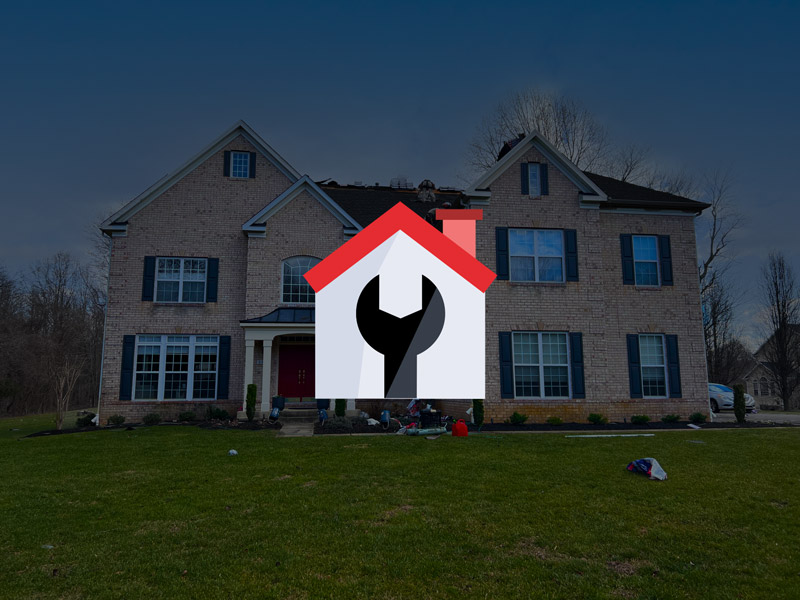Ceiling Leaking When It Rains: Effective Repairs and Prevention
Ceiling leaks when it rains can be a cause for concern and require immediate attention. Neglecting such leaks can lead to extensive damage to your property, compromising its structural integrity and potentially causing mold growth or electrical hazards. In this article, we will explore the causes behind ceiling leaks, effective preventive measures, and appropriate solutions to address this issue.

Understanding Ceiling Leaks
Impact of Rain on the Structural Integrity of Roofs
When rainwater infiltrates the roofing system, it can have detrimental effects on its structural integrity. The constant exposure to moisture can weaken various components, leading to potential leaks. The weight of the accumulated water can strain the roof structure, causing sagging or even collapse in severe cases.
Ceiling leaks when it rains are often a result of compromised roofing materials, such as deteriorated shingles or tiles. The prolonged exposure to rainwater can cause these materials to become brittle, crack, or develop gaps, allowing water to seep through. It is essential to address such issues promptly to prevent further damage and maintain a safe living or working environment.
Common Signs and Symptoms of a Leaking Ceiling
Identifying the signs and symptoms of a leaking ceiling is crucial for prompt detection and mitigation. Look out for water stains or discoloration on the ceiling surface, as well as dampness or moisture in the affected area. Water dripping or pooling is a clear indication of an active leak.
Other observable signs may include peeling paint or wallpaper, blistering or bubbling surfaces, and a musty odor. It’s important to note that these signs may not always be directly below the source of the leak, as water can travel along roof trusses or beams before making its way into the ceiling.
Importance of Identifying the Source of the Leak
To effectively address ceiling leaks when it rains, it is crucial to identify the exact source of the leak. The visible signs on the ceiling may not necessarily pinpoint the location of the problem. Water can travel along rafters, roof decking, or insulation, making it challenging to trace its origin.

Causes of Ceiling Leaks during Rainfall
Age-related Deterioration and Wear
Ceiling leaks when it rains can often be attributed to the aging and wear of roofing materials. Over time, exposure to weather elements and temperature fluctuations can cause materials to deteriorate. The constant cycle of wet and dry conditions weakens the protective layers of shingles or tiles, making them more susceptible to water infiltration. Consequently, water finds its way through cracks, gaps, or curling edges, resulting in leaks.
Damaged or Missing Shingles/Tiles
Another common cause of ceiling leaks is the presence of damaged or missing shingles or tiles. Harsh weather conditions, falling debris, or improper installation can cause shingles or tiles to crack, break, or become dislodged. This creates vulnerable entry points for rainwater to penetrate the roof. Even a small number of damaged or missing pieces can lead to significant water intrusion, causing leaks and potential interior damage.
Roofing System Problems
Inadequate Flashing or Sealant
Flashing and sealant play a crucial role in preventing water penetration in vulnerable areas of the roof, such as joints, valleys, and intersections. If the flashing (metal strips) or sealant (caulk or adhesive) deteriorates or was improperly installed, it can fail to provide a watertight barrier. This allows rainwater to seep through gaps and into the interior of the building, resulting in ceiling leaks when it rains.
Clogged or Damaged Gutters and Downspouts
Proper water drainage is essential to prevent leaks. Clogged or damaged gutters and downspouts can impede the flow of rainwater, causing it to overflow and accumulate on the roof. Excessive water accumulation can penetrate the roof’s protective layers, saturating the underlying materials and leading to leaks. Regular gutter and downspout maintenance is crucial in preventing this issue.

Detecting the Source of Ceiling Leaks
Conducting a Visual Inspection of the Roof
To identify the source of ceiling leaks when it rains, a visual inspection of the roof is an important first step. Start by examining the roofing materials, including shingles, tiles, or metal panels, for any visible damage, such as cracks, gaps, or missing pieces. Pay close attention to areas where different roofing components meet, such as valleys and flashing.
Inspect the condition of the sealant around vents, chimneys, skylights, and any other roof penetrations. Look for signs of wear, deterioration, or improper installation. These vulnerable areas are prone to developing leaks. By systematically inspecting the roof, you can narrow down potential problem areas and gather valuable information for further investigation.
Utilizing Moisture Meters and Thermal Imaging Technology
In some cases, the source of ceiling leaks may not be apparent through visual inspection alone. Moisture meters and thermal imaging technology can provide invaluable assistance in detecting hidden leaks and identifying areas of moisture accumulation within the roof structure.
Moisture meters measure the level of moisture content in materials such as wood, insulation, or drywall. By utilizing this tool, roofing professionals can pinpoint areas with elevated moisture levels, indicating potential leaks. Thermal imaging technology, on the other hand, captures infrared images that highlight temperature differences. This can help identify areas where water infiltration is occurring, as moisture often alters the temperature of affected materials.
Consulting Professional Roofing Contractors for Expertise
When it comes to accurately detecting the source of ceiling leaks when it rains, consulting professional roofing contractors is highly recommended. These experienced experts possess the knowledge, skills, and specialized equipment necessary to identify the precise origin of the leak.

Prevention and Maintenance
Regular Roof Inspections and Maintenance Routines
Regular roof inspections are crucial for preventing ceiling leaks when it rains. Schedule inspections at least once a year, preferably before the rainy season begins. During inspections, roofing professionals can assess the overall condition of the roof, identify potential issues, and address them promptly.
Maintenance routines should include tasks such as clearing debris from the roof surface, ensuring proper drainage, and checking for any signs of damage or wear. Fixing minor problems, such as replacing damaged shingles or reapplying sealant, can prevent them from escalating into major leaks during heavy rainfall.
Importance of Keeping Gutters and Downspouts Clear
Properly functioning gutters and downspouts play a significant role in diverting rainwater away from the roof and foundation. Regularly clean out debris, such as leaves, twigs, and sediment, to prevent clogging. Clogged gutters can lead to water overflow, which can seep into the roof and cause leaks. Additionally, check for any damages or leaks in the gutters and downspouts and repair them promptly.
Understanding the Role of Proper Attic Ventilation
Proper attic ventilation is essential for maintaining a healthy roofing system. It helps regulate temperature and humidity levels, reducing the risk of moisture buildup and subsequent damage. Excessive heat and moisture can compromise the integrity of the roof, leading to leaks and deterioration.
Ensure that your attic has sufficient ventilation through vents or fans. This promotes air circulation, preventing condensation and the growth of mold or mildew. Proper insulation also contributes to maintaining a balanced attic environment.
Applying Roof Coatings and Sealants for Added Protection
Roof coatings and sealants provide an extra layer of protection against the elements, including rainwater. They help enhance the waterproofing capabilities of the roof and extend its lifespan. Consult with a professional roofing contractor to determine the most suitable coating or sealant for your specific roof type and climate conditions.

Repairing Ceiling Leaks
Temporary Fixes to Minimize Immediate Damage
In cases of minor ceiling leaks, you can employ temporary fixes to minimize immediate damage. Start by placing a bucket or container under the leak to collect the dripping water. This helps prevent water from spreading and causing additional problems in your living space.
Next, locate the source of the leak on the ceiling. Use a flashlight to inspect the area and look for any visible signs of damage, such as cracks or gaps. If possible, temporarily patch the area using waterproof tape or sealant. This can provide a temporary barrier to prevent water from entering until professional repairs can be performed.
Identifying When Professional Repair is Necessary
While temporary fixes can provide temporary relief, it’s important to understand when professional repair is necessary. If the ceiling leak persists, worsens, or occurs during heavy rainfall, it indicates a more serious underlying issue that requires professional attention.
Additionally, if you notice significant water damage, sagging or bulging ceilings, or mold growth, it’s crucial to seek professional assistance. These signs may indicate structural damage or extensive water infiltration that requires professional expertise to address effectively.
Exploring Repair Options Based on the Severity of the Leak
The severity of the ceiling leak will determine the appropriate repair options. For minor leaks, a professional roofing contractor may recommend repairing or replacing damaged roofing materials, such as shingles or tiles. They will identify the exact source of the leak and perform the necessary repairs to restore the integrity of the roof.
Please Share!






